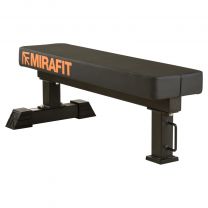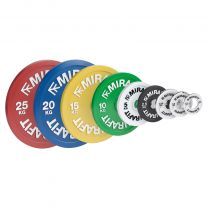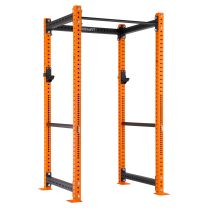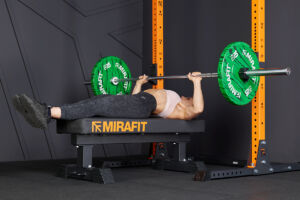How To Do the Spoto Bench Press
How To Do the Spoto Bench Press

One man shocked the Powerlifting world when he broke the bench press world record at 722 pounds. This man is Eric Spoto.
As a former arm wrestling champion, he used a lifting technique never seen before which is now known as the Spoto bench press. The movement consists of pausing the barbell 1-2 inches above the chest before driving back up to the starting position, prolonging the time the body stays tight and under tension.
How to Perform the Spoto Bench Press

The Spoto bench press is a variation of the traditional bench press that involves pausing the barbell just above the chest during the eccentric (lowering) phase of the movement. This pause eliminates the use of the stretch reflex and requires more strength and control to press the weight back up.
• Lie on a Flat Weight Bench with your eyes aligned with the barbell. Make sure your feet are firmly planted on the ground for stability. Your grip should be slightly wider than shoulder-width apart, but it can vary based on your comfort.
• Lift the barbell off the Power Rack and hold it with your arms fully extended. Ensure your wrists are straight, and your shoulders are squeezed back and down into the bench.
• As you lower the barbell, focus on controlling the descent. Bring the barbell down to just above your chest, around the nipple line or a bit higher. Avoid bouncing the bar off your chest.
• Hold the barbell in this position for a brief pause. This pause eliminates the stretch reflex, making the press more challenging. Maintain tightness in your upper body and engage your core during the pause.
• Push the Barbell back up by driving your feet into the ground, engaging your chest, shoulders, and triceps. Maintain proper form and keep your wrists straight throughout the movement. Fully extend your arms at the top of the movement without overextending your elbows.
Differences Between a Spoto Bench Press and Traditional Bench Press
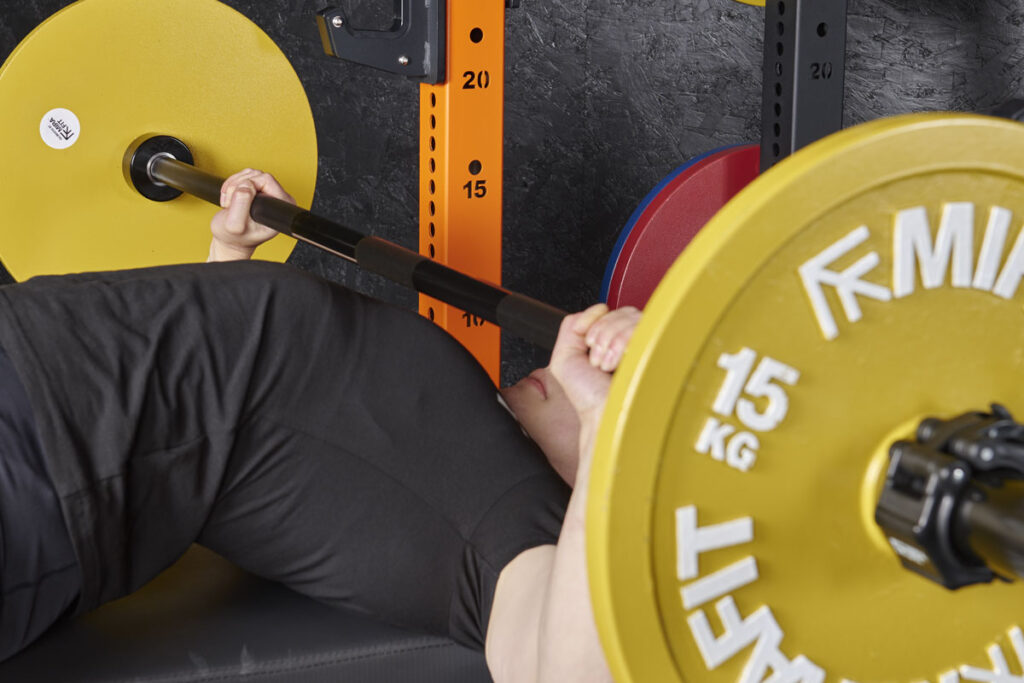
Although the foundations of both movements are the same, there are some key differences between the Spoto and traditional bench press. With a traditional bench press, lifters often allow the bar to touch their chest and can over rely on the rebound to get the bar back up.
With a Spoto, the lifter will pause 1-2 inches above the chest before pushing the weight back to the start position. By doing so, this increases the time under tension and focuses on a section of the movement that most lifters struggle with. This is also different from a regular pause bench press where the bar would be rested on your chest during the pause.
Benefits of the Spoto Bench Press

Increased Strength Off the Chest
The pause just above the chest in the Spoto Bench Press eliminates the stretch reflex, which means you're starting the concentric (lifting) phase from a dead stop. This helps develop explosive strength from the bottom portion of the bench press.
Improved Muscle Control and Stability
Holding the barbell in a paused position requires greater muscle control and stability. This translates to better motor control, helping you maintain proper form during the bench press.
Develops Lockout Strength
While the Spoto Bench Press focuses on the bottom portion of the lift, it also contributes to building lockout strength. After the pause, you need to generate sufficient force to press the barbell through the more challenging lockout phase, thus improving overall pressing strength.
Whilst the Spoto bench press is a great exercise to improve your bench press, it is also a difficult exercise and should be used with caution. If you’re lifting a heavy weight, be sure to use a spotter when carrying out the lift. When you’re ready, it’s time to reap the benefits of this underutilised bench press variation.
For more content, follow us on Instagram, YouTube, TikTok, and on our official Mirafit Facebook page.
Enter your email to signup to our newsletter
Tags: Equipment > Bars and Weight Plates ; Equipment > Benches ; Equipment > Power Racks and Cages ; Exercise Type > Strength

